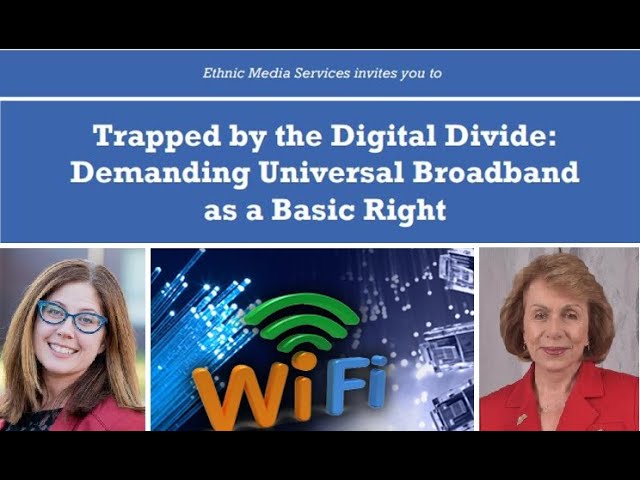Vidya Sethuraman
India Post News Service
The pandemic highlighted how crucial it is to be connected to the Internet for education, healthcare, work, and even public safety. The digitally disenfranchised, typically low income, vulnerable communities in rural and urban areas, end up falling behind in almost every respect. EMS briefing on July 23 discussed pending federal and state legislation as well as private sector initiatives to close the digital divide, and the push to hold Internet service providers accountable in what has become a new struggle for digital equity rights.
Angela Siefer, Executive Director, National Digital Inclusion Alliance (NDIA) spoke about NDIA, which is a unified voice for home broadband access, public broadband access, personal devices, and local technology training and support programs. NDIA is a community of digital inclusion practitioners and advocates, who work collaboratively to craft, identify and disseminate financial and operational resources for digital inclusion programs while serving as a bridge to policymakers and the general public.
It is a nonprofit that advocates for low-income communities to get access to technology. She said more and more states are strengthening their efforts in addressing digital inequities. Essentially, access to the Internet as well as the skills to use it in meaningful ways is evolving to become a major priority for governments at all levels. She said if the new infrastructure bill is passed, broadband is part of it. Improving digital literacy is also critical to confronting racial inequality. To really achieve equity, we have to get beyond the thinking: let’s just make it available, said Siefer. In addition to the possible funding at the federal level, in fact, some of the relief funds previously distributed to the states can also be used for digital equality, so if an organization is committed to this issue, it can apply for funding.
The California Emerging Technology Fund (CETF) has been established as a non-profit corporation pursuant to orders from the California Public Utilities Commission (CPUC) in approving the mergers of SBC-AT&T and Verizon-MCI in 2005. CETF, a nonprofit foundation focused on digital equity in the state, has been monitoring California’s progress toward expanding Internet infrastructure and digital access since 2008. Sunne Wright McPeak, CETF president and CEO, pointed out that infrastructure cannot solve all problems. During the pandemic, children have to study from home using computers, and many parents also have to work from home with computers, so it is not possible to use only phones.
Only through the promotion of equal rights, fairness and justice through communities and grassroots organizations can the digital divide be truly eliminated. In 2008, about 55% of Californians had the Internet at home, and that number increased to 87% in 2017. The Hispanic community has the fewest people using the Internet at home, with nearly a quarter of people without Internet or only accessing the Internet by phone. While California is a tech center and ranks as the world’s fifth-largest economy, it has the highest number of people living in poverty of any state.
Michelle Flores, a student and tutor for Southeast Community Development Corporation (SCDC) in Los Angeles County, shared her own difficulties due to not having the Internet, and also described the difficulties of tutoring students without Internet. She said she had to use a mobile phone, or “hotspot,” to get her computer to have Internet access to study and work from home, but that Internet wasn’t fast enough for her to be productive. However, SCDC stepped in to help and connect the children to the Internet, and also gave them computers to study.
It’s time to close the digital divide in our country and treat internet service like the 21st century necessity that it is not just a luxury for some but an essential utility for all.







